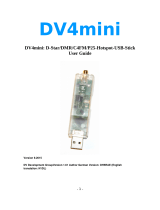
i
Contents
Documentation Information ..................................................................................................................... 1
1. Packing List ........................................................................................................................................... 2
2. Product Overview .................................................................................................................................. 3
2.1 Front Panel ........................................................................................................................................ 3
2.2 Rear Panel ......................................................................................................................................... 3
2.2.1 Basic Version ........................................................................................................................... 3
2.2.2 Advanced Version .................................................................................................................... 4
2.3 Internal Parts ..................................................................................................................................... 5
2.3.1 Basic Version ........................................................................................................................... 5
2.3.2 Advanced Version .................................................................................................................... 6
3. Installation ............................................................................................................................................. 7
3.1 Installation Requirements .................................................................................................................. 7
3.1.1 Environmental Conditions ........................................................................................................ 7
3.1.2 Installation Site ........................................................................................................................ 7
3.2 Pre-installation Tasks ........................................................................................................................ 7
3.2.1 Preparing the Tools .................................................................................................................. 7
3.2.2 Checking the Power Supply ..................................................................................................... 7
3.3 Installation Procedure ........................................................................................................................ 7
3.4 Post-installation Check ...................................................................................................................... 8
4. Basic Operations ................................................................................................................................... 9
4.1 Turning On or Off the Repeater ......................................................................................................... 9
4.2 Changing the Channel ....................................................................................................................... 9
4.3 Adjusting the Volume ......................................................................................................................... 9
4.4 Checking the Status ........................................................................................................................... 9
4.4.1 Repeater .................................................................................................................................. 9
4.4.2 Network Interface .................................................................................................................. 10
4.4.3 Power Supply ........................................................................................................................ 10
5. Alarm Information ............................................................................................................................... 11
5.1 Low Forward Power Alarm .............................................................................................................. 12
5.1.1 Description ............................................................................................................................. 12
5.1.2 Solution.................................................................................................................................. 12
5.2 TX/RX Unlocked Alarm .................................................................................................................... 12
5.2.1 Description ............................................................................................................................. 12
5.2.2 Solution.................................................................................................................................. 12
5.3 PA Over-Temperature Alarm ........................................................................................................... 13
5.3.1 Description ............................................................................................................................. 13

























